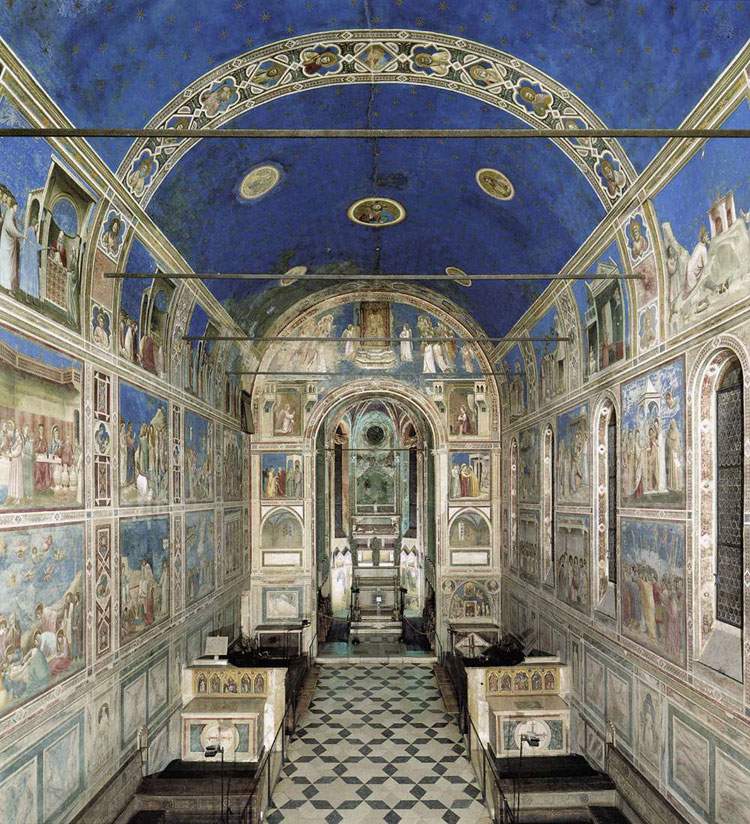To illustrate the complex personifications of the vices and virtues in the Scrovegni Chapel in Padua, the great Giotto (Vespignano, 1267 - Florence, 1337) had the paintings completed with a series of “tituli,” Latin inscriptions to better specify the meanings of the allegories. These inscriptions are found on the lower register of the side walls of the chapel decorated with the great Giottesque cycle, and the hand that traced them, though different from that of the Tuscan artist, is by an author contemporary with him. Unfortunately, due to the technique with which they were executed (with dry paint), they suffered a degradation that, over the centuries, had made them illegible: so far they had been deciphered only in part (in particular, the allegories that remained legible were those of Hope, Charity and Justice).
Fortunately, the “tituli” have been recovered and “deciphered” almost in their entirety. The public can understand them thanks to a publication by Giulia Ammannati, a researcher at the Scuola Normale Superiore in Pisa and a teacher of Latin paleography at the same institute (where she graduated in 1995 in Classical Philology and perfected in 2000 in Latin paleography). To Giulia Ammannati’s professionalism and expertise is due the almost complete recovery of the inscriptions: in fact, the book comes as the culmination of a long research. It is entitled"Pinxit industria docte mentis. The inscriptions of the allegories of Virtues and Vices painted by Giotto in the Scrovegni Chapel" and is now available for purchase on the Edizioni della Normale website.
“A fascinating literary document of the so-called prehumanism of Padua,” we read on the back cover, “the resurfaced texts prove fundamental to the understanding of the painted figures, providing a finally certain key to the intentions that guided Giotto in the conception of his admirable allegories.” Giulia Ammannati’s research, punctually explained in the book (where each inscription is translated into Italian and commented on), is of the utmost importance in that it will help scholars and the public alike to better understand the message that client and artist wanted to send through the cycle. And of course because, after centuries, the inscriptions come back to life.
 |
| Scrovegni Chapel inscriptions recovered: important research by Giulia Ammannati |
Warning: the translation into English of the original Italian article was created using automatic tools. We undertake to review all articles, but we do not guarantee the total absence of inaccuracies in the translation due to the program. You can find the original by clicking on the ITA button. If you find any mistake,please contact us.